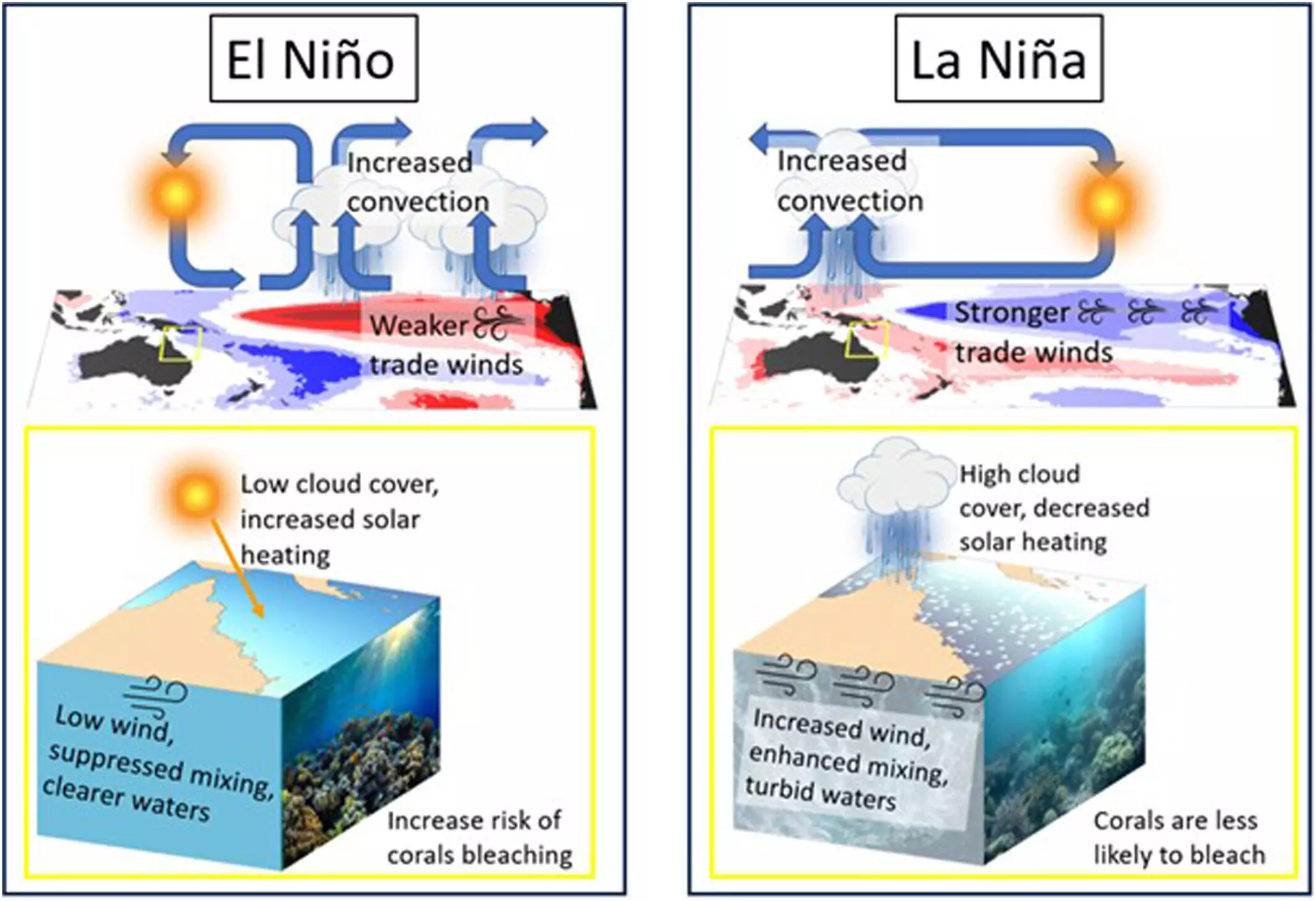The Great Barrier Reef (GBR) is an iconic coral ecosystem located along Australia’s northeastern coast, spanning nearly 350,000 square kilometers. Known for its rich biodiversity, cultural importance, and economic value, the GBR contributes approximately $6.4 billion annually to the Australian economy. However, the reef is facing significant threats due to rising ocean temperatures caused by climate change.
A recent study conducted by the Institute for Marine and Antarctic Studies and the ARC Center of Excellence for Climate Extremes at UNSW Sydney has shed light on the impact of the Madden-Julian Oscillation (MJO) and El Niño Southern Oscillation (ENSO) on coral bleaching events in the GBR. The study, titled “Combined Role of the MJO and ENSO in Shaping Extreme Warming Patterns and Coral Bleaching Risk in the Great Barrier Reef,” highlights how these climatic phenomena influence weather conditions over the reef, ultimately contributing to the escalating threat of coral bleaching.
Corals in the GBR are highly sensitive to weather conditions. Clear, calm weather tends to result in elevated ocean temperatures, increasing the likelihood of coral bleaching. On the other hand, stormy and rainy weather can cool the ocean, offering some protection to the corals. This is due to the fact that sunny days allow more sunlight to penetrate the water surface, causing the ocean to heat up, whereas storms and rain generate cloud cover and wind, encouraging the mixing of warmer surface waters with cooler, deeper waters.
The study revealed that while El Niño Southern Oscillation (ENSO) impacts weather patterns over the GBR on a seasonal scale, the Madden-Julian Oscillation (MJO) can affect these patterns on shorter, sub-seasonal timescales. This dynamic interaction leads to unexpected fluctuations in ocean temperatures and their impact on coral health. Catherine Gregory, the study’s lead author, emphasized the importance of considering multiple climatic drivers beyond ENSO to better understand extreme warming and coral bleaching events in the GBR.
Understanding how ENSO and MJO influence weather patterns is crucial for anticipating and managing coral bleaching events in the Great Barrier Reef. While ENSO phases like El Niño and La Niña have traditionally been associated with changes in weather and ocean temperatures, the study underscores the disruptive impact of the MJO on these patterns. Comprehensive forecasting models that account for both ENSO and MJO influences are essential for predicting and mitigating the impact of coral bleaching events in the future.
As climate change continues to pose a major threat to coral reefs worldwide, including the GBR, it is imperative to deepen our understanding of the complex interactions between climatic drivers and their effects on coral health. By developing adaptive strategies informed by these insights, we can work towards safeguarding the future of the Great Barrier Reef and other vulnerable marine ecosystems.


Leave a Reply